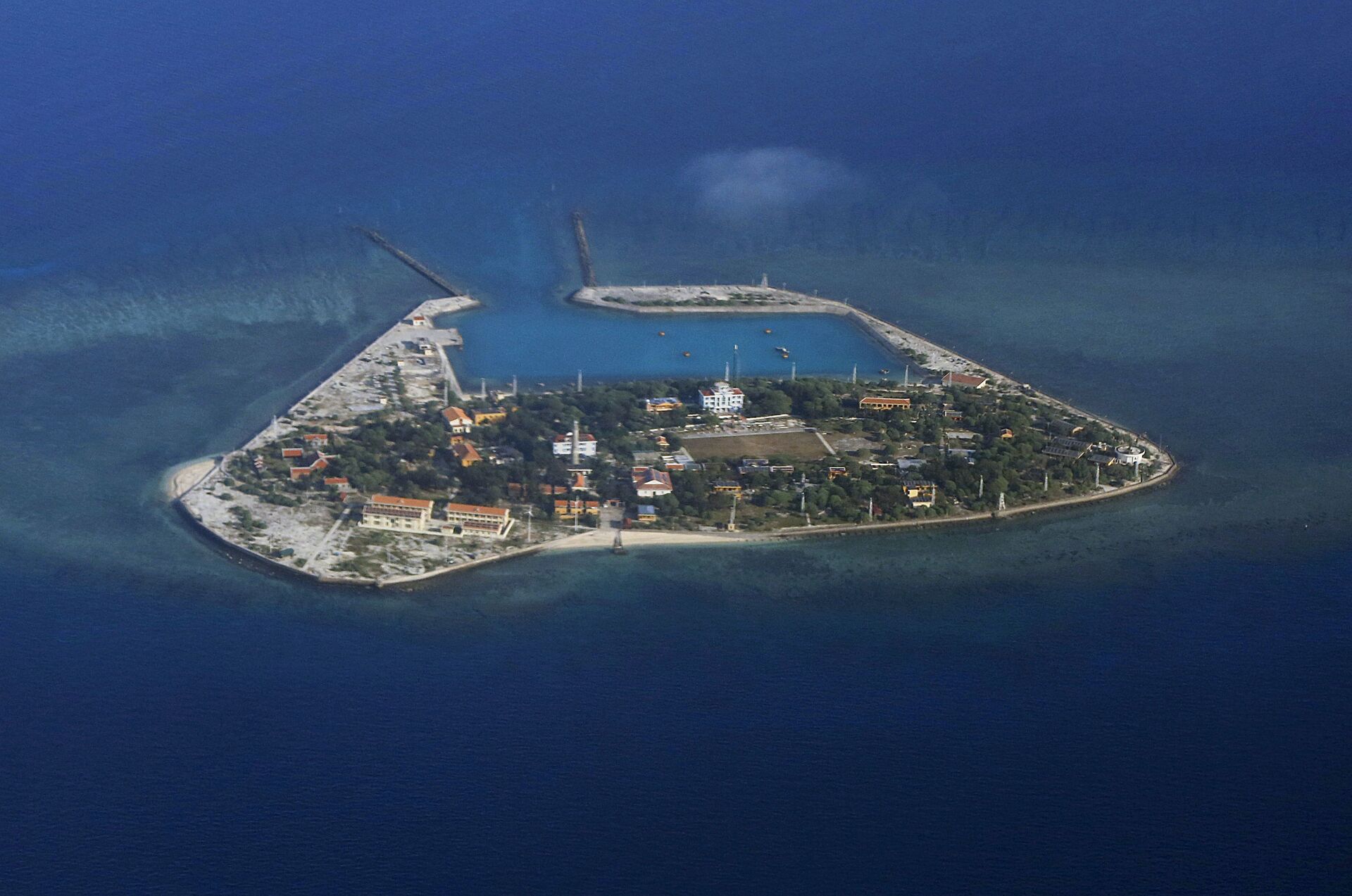India Asserts Maritime Presence in South China Sea As US Calls to Halt Beijing's 'Aggression'
17:41 GMT 02.08.2021 (Updated: 09:36 GMT 20.06.2023)

© AP Photo / Aaron Favila
Subscribe
The announcement that warships have been deployed in the South China Sea comes despite speculation from local analysts that India would not make a great effort to assert its presence in the maritime sphere because a lot of money has already been allocated to secure its land border with China.
India has announced that a task force of the Eastern Naval Fleet - consisting of a guided missile destroyer, a guided missile frigate, an anti-submarine corvette and a guided missile corvette - has been deployed for two months in the South China Sea, South-East Asia and western Pacific.
In a rare statement, the Indian defence ministry said that this deployment seeks to highlight the “operational reach, peaceful presence and solidarity with South-East Asian countries towards ensuring good order in the maritime domain”.
The warships are scheduled to participate in bilateral exercises with the Royal Malaysian Navy, Vietnamese Peoples’ Navy, Philippines Navy, Singapore Navy, Indonesian Navy and Royal Australian Navy (AUS-INDEX). Aside from Beijing, the contested waters of the South China Sea are claimed by a number of countries, such as the Philippines, Brunei, Malaysia, and Vietnam.

The Vietnamese-claimed Southwest Cay island in the Spratly island group is seen from a Philippine Air Force C-130 transport plane during the visit to the Philippine-claimed Thitu Island by Defense Secretary Delfin Lorenzana, Armed Forces Chief Gen. Eduardo Ano and other officials in disputed South China Sea, western Philippines, Friday, April 21, 2017.
© AP Photo / Francis Malasig
“They would also participate in a multilateral exercise MALABAR-21 alongside the Japanese Maritime Self-Defence Force, Royal Australian Navy and the United States Navy in the western Pacific,” the statement issued by the defence ministry on Monday reads.
"Besides regular port calls, the task group will operate in conjunction with friendly navies, to build military relations and develop interoperability in conduct of maritime operations," the statement added.
The announcement comes days after Beijing termed the deployment of UK’s Queen Elizabeth’s foray, accompanied by a US destroyer, in South China Sea, as a deliberately hostile, political provocation. It could “destabilise regional peace”, China's foreign ministry warned.
#IndianNavy’s Eastern Fleet ships - #INSRanvijay, #INSShivalik, #INSKadmatt & #INSKora are scheduled to proceed on an Overseas Deployment of over two months to #SoutheastAsia, #SouthChinaSea & Western Pacific (1/n).@DefenceMinIndia@PRO_Vizaghttps://t.co/cMdPCUFslM
— SpokespersonNavy (@indiannavy) August 2, 2021
File 📷 pic.twitter.com/ljTHmoULPB
Nevertheless, US Secretary of Defense, Lloyd Austin, at the 40th IISS Fullerton Lecture on 27 July, said: “I’m especially encouraged to see friends building stronger security ties with one another, further reinforcing the array of partnerships that keeps aggression at bay.”
“At the same time, we’re moving to enhance our combined presence in the Indo-Pacific with other close partners and allies,” Austin said while mentioning Beijing’s unwillingness to resolve disputes peacefully and respect the rule of law isn’t confined to the water.
“We have also seen aggression against India… destabilising military activity and other forms of coercion against the people of Taiwan,” he added.
Austin’s remarks came against the backdrop of China’s reluctance to pull its troops back from Hot Springs and Gogra Post which, along with Depsang Plains, remain the contentious points between the two sides. During the military commanders’ level talks on 9 April, according to the Indian media source, China said India “should be happy with what has been achieved”. As land border tensions refuse to abate, analysts anticipated that adapting to the new challenge will probably defer India’s much-needed military expansion in the Indian Ocean.




